In the Hindu mythology Samudra Manthan is regarded as the churning of the ocean of milk. This is one of the popular stories in the Puranas. The festival relating to Samudra manthan is celebrated in every twelve years in the Kumbha Mela. The legendary story of the Samudra manthan is stated in the Srimad Bhagavatam, the Vishnu Purana and the epic Mahabharata.
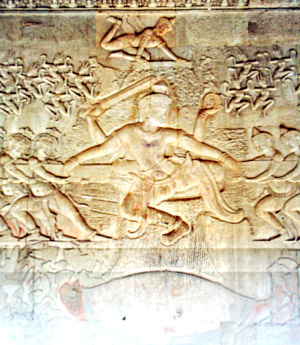 The Samudra Manthan is also known as Samudra Manthanam, in which Manthanam means `to churn`. It is also called Sagar manthan, Sagar is a synonym for Samudra, meaning an ocean or large water body. Samudra Manthan is again named as Ksheersagar manthan. Ksheersagar literally means the ocean of milk, `Ksheer` means milk and Sagar means ocean.
The Samudra Manthan is also known as Samudra Manthanam, in which Manthanam means `to churn`. It is also called Sagar manthan, Sagar is a synonym for Samudra, meaning an ocean or large water body. Samudra Manthan is again named as Ksheersagar manthan. Ksheersagar literally means the ocean of milk, `Ksheer` means milk and Sagar means ocean.
The story of Samudra Manthan is a legendary one. Once Lord Indra, the King of Gods, while riding his elephant came across Rishi Durvasa who offered him a special garland. Lord Indra received the garland but placed it in on the trunk of the elephant. The elephant got annoyed by the aroma of the flowers and threw the garland on the floor. The sage Durvasa got infuriated as the garland was a dwelling of Sri or fortune and to be treated as `Prasada`. But Lord Indra committed crime and insulted the sage Durvasa by throwing the garland. Against this deed Rishi Durvasa cursed Indra and all Devas or gods to be deprived of all their celestial, power strength, vigor, and luck.
There was a combat between the Gods and Asuras or demons, where the Gods were defeated by Asuras. The leader of the demons army was king Bali who achieved control of the universe. All the Devas were to Lord Vishnu for help and Vishnu advised them to treat asuras in a tactful and intelligent way. The gods formed an association with asuras to jointly stir up the ocean for the nectar of immortality and to divide it among them. Lord Vishnu additionally informed the Devas or gods that he would organize a plan in which the gods alone will receive the nectar of immortality.
Samudra Manthan or the churning of the ocean of milk was a complicated process. In the process of Samudra Manthan, Mount Mandaranchal was used as churning rod and Vasuki, the King of Serpents, became the churning rope. On one side the gods held the tail of Vasuki while on the other hand the demons held the head end of the snake and they pulled on it alternately causing the mountain to rotate which in turn churned the ocean. Nevertheless, once the mountain was placed on the ocean, it began to sink. Lord Vishnu in is his second incarnation, in the form of turtle Kurma, came to rescue the gods and asuras and supported the mountain on his shell back.
Throughout the Samudra Manthan made by the gods and demons, Halahala, a pot of poison came out of the ocean. This poison terrified the Gods and demons as the poison was so deadly that its effects would have wiped out the entire creation. On the counsel of Vishnu, Gods approached Lord Shiva for assistance and protection. Shiva drank the poison out of sympathy for living beings. Then Goddess Parvati, wife of Shiva pressed his neck so that the poison does not reach his stomach. Thus, it stayed in his throat neither going up nor down and Shiva remained uninjured. The poison was so strong and effective the color of Shiva`s neck was changed to blue. Thus Shiva is also called Nilakantha or the blue-necked one. Shivaratri, the festival of lord Shiva is celebrated relating to this event.
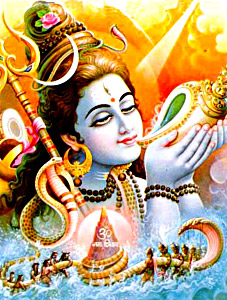 In Samudra Manthan various kinds of herbs were cast into the ocean and fourteen Ratnas or treasures were produced from the ocean and were divided between Asuras and Gods. These Ratnas were Lakshmi, the Goddess of Fortune and Wealth or Vishnu`s consort; Kaustabha, the most valuable gem in the world; Parijat, the divine flowering tree with blossoms that never fade or wilt; Varuni, goddess and creator of alcohol; Dhanvantari, the doctor; Chandra, the moon; Kamadhenu, the wish-granting divine cow and Kalpavriksha, the wish-granting tree and Airavata, the elephant of Indra. The names of some of the other Ratnas are Apsaras, various divine nymphs like Rambha, Menaka, Punjikasthala, etc; Uchhaishravas, the celestial seven-headed horse; Sranga, the bow of Vishnu; Shankha or Vishnu`s conch and Amrita the nectar for immortality.
In Samudra Manthan various kinds of herbs were cast into the ocean and fourteen Ratnas or treasures were produced from the ocean and were divided between Asuras and Gods. These Ratnas were Lakshmi, the Goddess of Fortune and Wealth or Vishnu`s consort; Kaustabha, the most valuable gem in the world; Parijat, the divine flowering tree with blossoms that never fade or wilt; Varuni, goddess and creator of alcohol; Dhanvantari, the doctor; Chandra, the moon; Kamadhenu, the wish-granting divine cow and Kalpavriksha, the wish-granting tree and Airavata, the elephant of Indra. The names of some of the other Ratnas are Apsaras, various divine nymphs like Rambha, Menaka, Punjikasthala, etc; Uchhaishravas, the celestial seven-headed horse; Sranga, the bow of Vishnu; Shankha or Vishnu`s conch and Amrita the nectar for immortality.
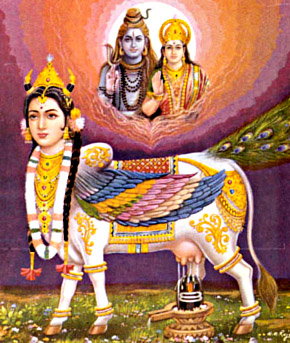 This is the story on the nectar of immortality or Amrita for which the Samudra Manthan was exercised. Dhanvantari, the divine Physician, emerged with a pot containing amrita, the heavenly nectar of immortality. A fierce battle started between the Devas and Asuras for the nectar. The Devas to protect the nectar from Asuras hid the pot of nectar or amrita at four places on the earth. The holy places where the nectar was hidden were Prayag (Allahabad), Haridwar, Ujjain and Nashik. At each of these places, a drop of the nectar fell from the pot and ever since it is believed that these places have mystical power. That is why Kumbha Mela is celebrated at the four places every twelve years.
This is the story on the nectar of immortality or Amrita for which the Samudra Manthan was exercised. Dhanvantari, the divine Physician, emerged with a pot containing amrita, the heavenly nectar of immortality. A fierce battle started between the Devas and Asuras for the nectar. The Devas to protect the nectar from Asuras hid the pot of nectar or amrita at four places on the earth. The holy places where the nectar was hidden were Prayag (Allahabad), Haridwar, Ujjain and Nashik. At each of these places, a drop of the nectar fell from the pot and ever since it is believed that these places have mystical power. That is why Kumbha Mela is celebrated at the four places every twelve years.
Inspite of hiding the nectar the Asuras got hold of the nectar and started rejoicing. Terrified and worried the gods pleaded to Vishnu, who then took the form of Mohini. Mohini was beautiful and enchanting lady and fascinated the Asuras with her beauty. The Asuras were engrossed and Mohini took the amrita from the asuras and distributed it amongst the Adityas or the gods who drank it. One of the Asuras, Rahu, disguised himself as Deva drank some Nectar. But due to their luminous nature the Sun God Surya and the Moon God Chandra noticed the change. They both informed Mohini about how Rahu had disguised himself to be a god. Before the Nectar could pass his throat, Mohini cut off his head with her divine discus, the Sudarshana Chakra. As the head of Rahu contacted with the amrita, thus the head remained immortal. To take revenge on Sun and Moon for revealing the story the immortal head of Rahu occasionally swallows the sun or the moon that causes eclipses. At this moment the sun or moon passes through the opening at the neck, putting an end to the eclipse. After this the Adityas or Gods rejoices at attaining immortality and defeating the Asuras or demons.
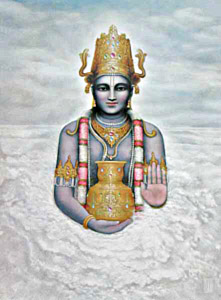 Samudra Manthan signifies the spiritual endeavor of a person to achieve self-realisation through meditation or awareness of mind. This is done by withdrawing of senses, control of desires and practice of austerity and asceticism.
Samudra Manthan signifies the spiritual endeavor of a person to achieve self-realisation through meditation or awareness of mind. This is done by withdrawing of senses, control of desires and practice of austerity and asceticism.
In Samudra Manthan the gods and demons symbolizes the positives and negatives personalities. The involvement of both the Devas and the Asuras represents that when one is seeking ecstasy through spiritual practice the other has to integrate and harmonize both the positive and negative aspects and put both the energies to work for the common goal.
Again the ocean of milk in Samudra Manthan is the mind or the human realization. The mind is like an ocean while the thoughts and emotions are the waves in the ocean.
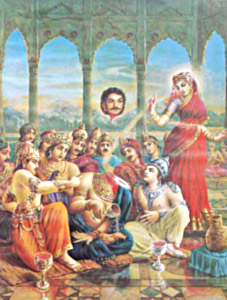 Mandhara, the mountain signifies concentration in Samudra Manthan. The word Mandhara is derived from the Sanskrit words Mana meaning mind and Dhara means a single line. Thus Mandhara means holding the mind in one line which is possible only by concentration. Mount Mandhara was supported by Lord Vishnu as a Kurma (tortoise). The tortoise symbolizes the removal of the senses into oneself as a tortoise withdraws its head into its shell. This is how one practices mental concentration and meditation or contemplation.
Mandhara, the mountain signifies concentration in Samudra Manthan. The word Mandhara is derived from the Sanskrit words Mana meaning mind and Dhara means a single line. Thus Mandhara means holding the mind in one line which is possible only by concentration. Mount Mandhara was supported by Lord Vishnu as a Kurma (tortoise). The tortoise symbolizes the removal of the senses into oneself as a tortoise withdraws its head into its shell. This is how one practices mental concentration and meditation or contemplation.
In Samudra Manthan Vasuki portrays desire or aspiration. Vasuki is used in the churning of the ocean signifies that the gods and the demons held desire to seek immortality as a rope and churned the mind with the help of meditation and discarding other needs. Thus if desire is not controlled, will overshadows an individual and destroy him
The Halahala poison is a sign of suffering and pain that is the counter-reaction of the mind and body, the one undergoes at the beginning of spiritual sadhana. When the intellect is subjected to excessive concentration, the foremost thing that comes out of the process is intense suffering and great inner disorder. These must be solved or hence no further process can be progressed.
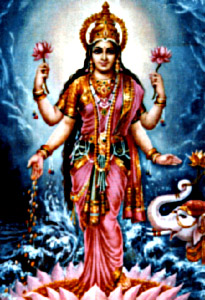 Lord Shiva in Samudra Manthan is a symbol of the ascetic and holy principle. As Shiva consumes the poison and one person can deal with the early problems of spiritual life by cultivating the qualities of Lord Shiva, mainly, bravery, initiative, eagerness, obedience, simplicity, austerity, aloofness, sympathy, true love and asceticism. The various valuable objects that come out of the ocean during the churning are a sign for Siddhis or the psychic or spiritual powers which one gains as one progresses piously from stage to stage. The seeker of spiritual power must be cautious about the powers as they can obstruct his or her progress unless the person uses them sensibly. This power must be utilized for the benefit and safety of other person and not for selfish gains. For this reason both the Gods and demons distributed all the objects as they did not want to lose sight of their original aim which was to gain immortality.
Lord Shiva in Samudra Manthan is a symbol of the ascetic and holy principle. As Shiva consumes the poison and one person can deal with the early problems of spiritual life by cultivating the qualities of Lord Shiva, mainly, bravery, initiative, eagerness, obedience, simplicity, austerity, aloofness, sympathy, true love and asceticism. The various valuable objects that come out of the ocean during the churning are a sign for Siddhis or the psychic or spiritual powers which one gains as one progresses piously from stage to stage. The seeker of spiritual power must be cautious about the powers as they can obstruct his or her progress unless the person uses them sensibly. This power must be utilized for the benefit and safety of other person and not for selfish gains. For this reason both the Gods and demons distributed all the objects as they did not want to lose sight of their original aim which was to gain immortality.
In Samudra Manthan Dhanvantari represents physical condition and signifies that immortality or spiritual success can be achieved only when the body and the mind are hale and hearty. Mohini signifies vision of the mind in the human form, originating from pride. Mohini is the pride of achievement to which the demons or asuras surrender and thus lost sight of their goal. The last obstacle a person has to overcome in achieving spiritual life before experiencing self-realisation is arrogance and self-centeredness. The Amrita symbolizes the ultimate achievement of the goal of self-realisation. Goddess Lakshmi in Samudra Manthan signifies universal enhancement which comes out automatically by one`s own eternal realization or Amrita.



















